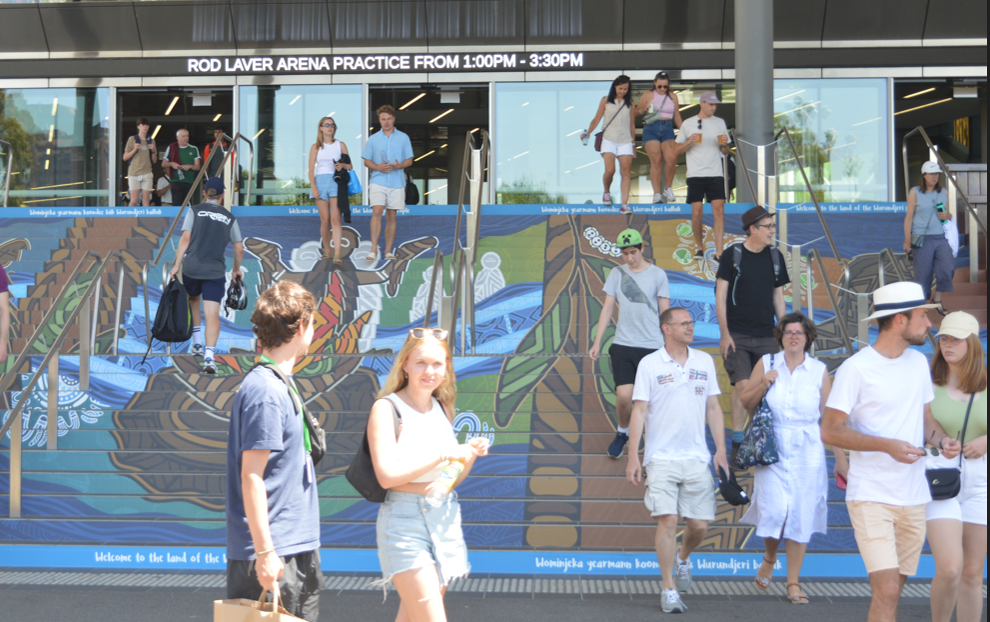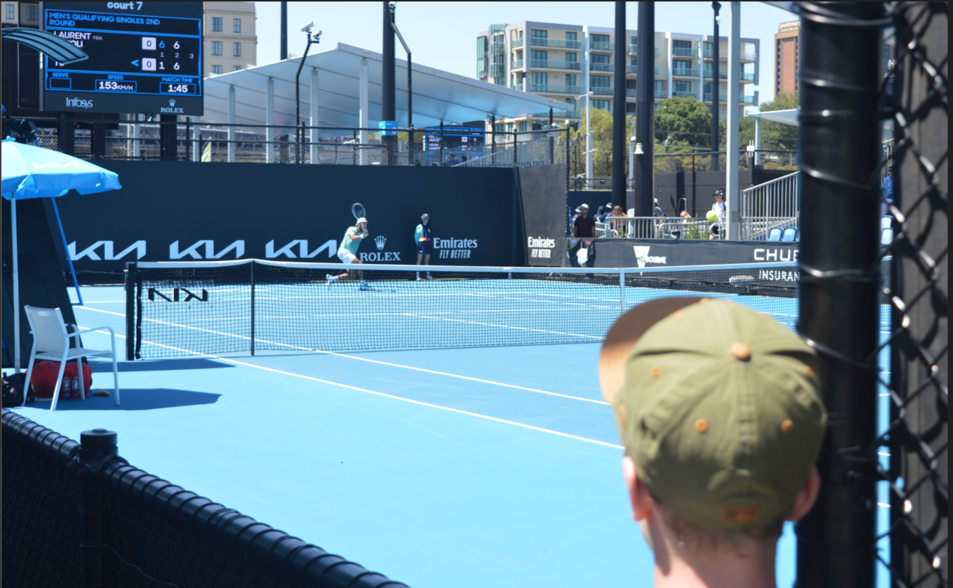
There have been no shortcuts in Katherine Sebov’s tennis journey. On Thursday in the Australian Open’s final round of qualifying, she got a reward for all her hard slogging in the minor leagues of the sport – a spot in this year’s main draw. It’s her first at a Grand Slam event and she did it by defeating Simona Waltert of Switzerland 6-4, 6-3.
The 24-year-old from Toronto debuted in the WTA rankings at 16 in 2015, breaking into the top-300 two years later but not cracking the top-200 for another five full years.
That didn’t happen until this very month and her victory over the No. 129-ranked Waltert has moved her up to a personal-best No. 190.
“This is the biggest moment of my career,” she said standing just outside Court 3 right after her win. “I’ve put a lot of work in and it’s not easy going through ITFs (International Tennis Federation tournaments) and staying there a while. I had to really put my head down and work… at times it was very difficult. So being here in the main draw after getting through qualies and beating very good players – this is definitely a very happy moment for me.”
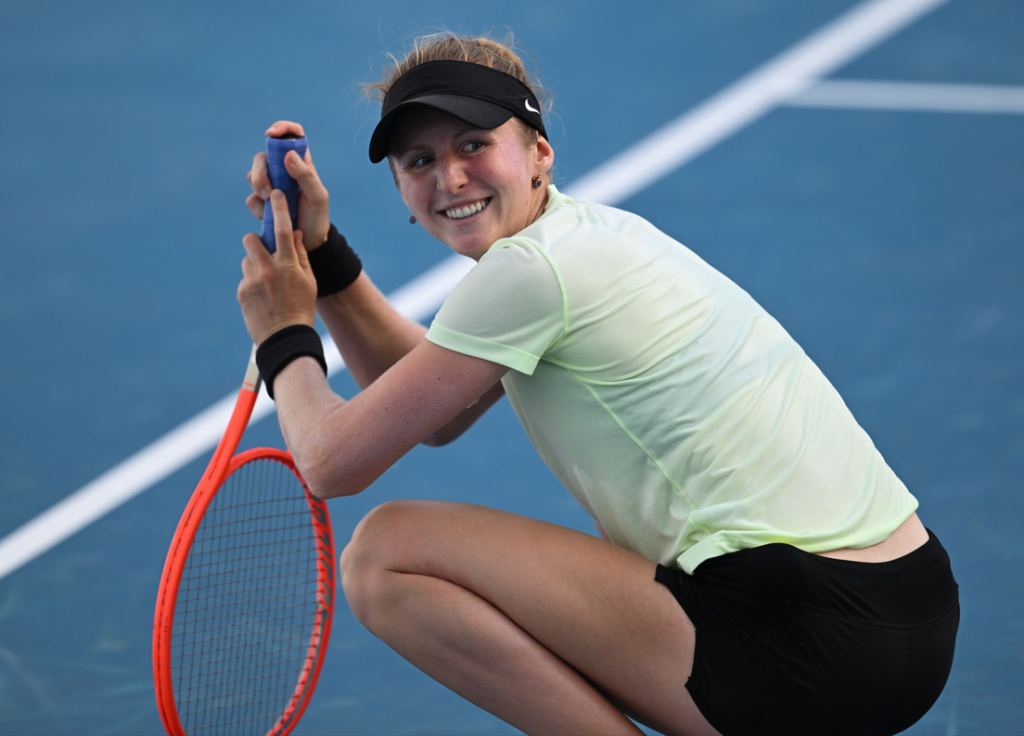
The genesis of her improved play can be traced to the fall of 2022 when she reached the final of a $60,000 National Bank Challenger in Saguenay, Que., and then qualified and made it to the quarter-finals of a WTA 125 event in Midland, Michigan, including a victory over No. 58-ranked Zhu Lin of China (Rebecca Marino’s first-round opponent in the 2023 Aussie Open main draw).
“I had a couple of wins over like No. 80 in the world and a girl like No. 60 late last year and that definitely gave me confidence,” Sebov said. “Even playing Toronto (National Bank Open) against (No. 46 Yulia) Putintseva, three sets, that gave me confidence that I was at this level.”
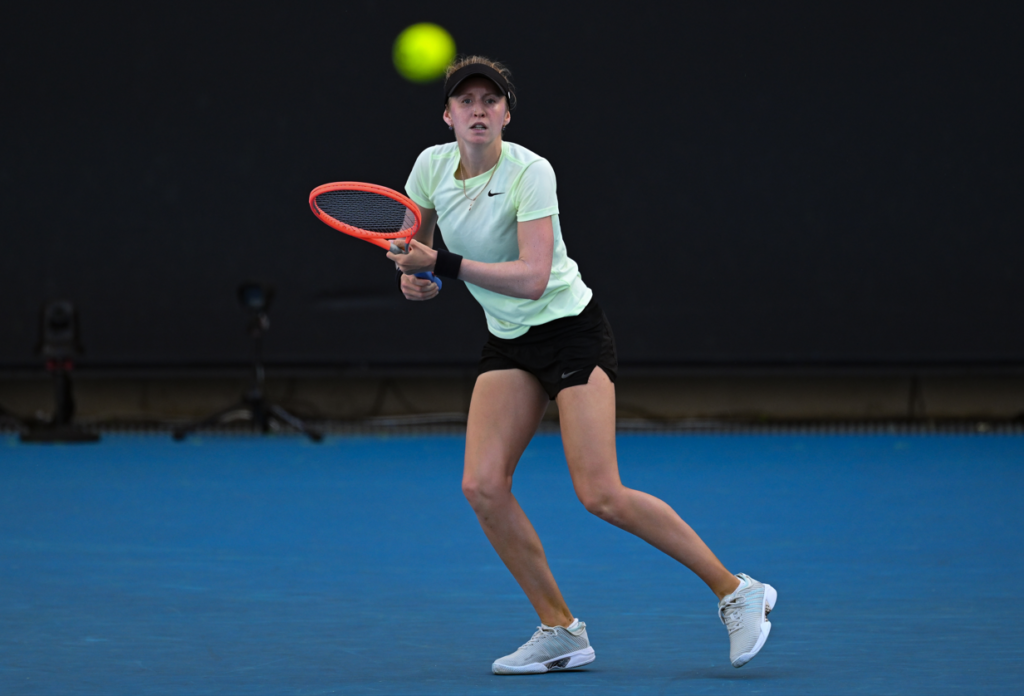
Sebov’s extended time in the trenches of the game has given her perspective, and she has grown into something of a thinking woman’s tennis player.
“My theory is that there is no such thing as an easy match,” she said. “So going against someone who’s No. 1000 in the world, or No. 50, there are just different challenges. Like when you go into a $25,000 (event) you have expectations to win the whole thing, you have to put that away when you go out there and play those opponents. Also they could play a little bit unconventional, it’s not an easy pace so you need to adjust a lot. The opposition here is a lot stronger on paper and in reality, but there’s definitely challenges against anybody.”
In Sebov’s mind the challenge against Waltert, a 22-year-old taller and skinnier version of a player like Camila Giorgi in terms of hard, flat shots, was, “just playing my game to rush her.” With a big smile she added, “I always rush people and make them play bad. That’s kind of my thing. That was the key I guess.”
Waltert started the match unsettled and unsure and quickly found herself trailing 4-0. That was all the separation Sebov needed to go on and close out the opening set 6-4 in 34 minutes.
The two games at the start of the second set were highly-competitive, even if of modest quality. The first was an eight-deuce game with Waltert holding serve in 13 minutes and the second a four-deuce game that lasted eight minutes before Sebov held. But once she did and then broke serve to 3-2, Waltert seemed to deflate and the outcome was no longer really in doubt.
With so much at stake, it’s not surprising that there was nervous, uneven play – Sebov finishing with 15 winners and 35 unforced errors and Waltert with 18 winners and 48 unforced errors.
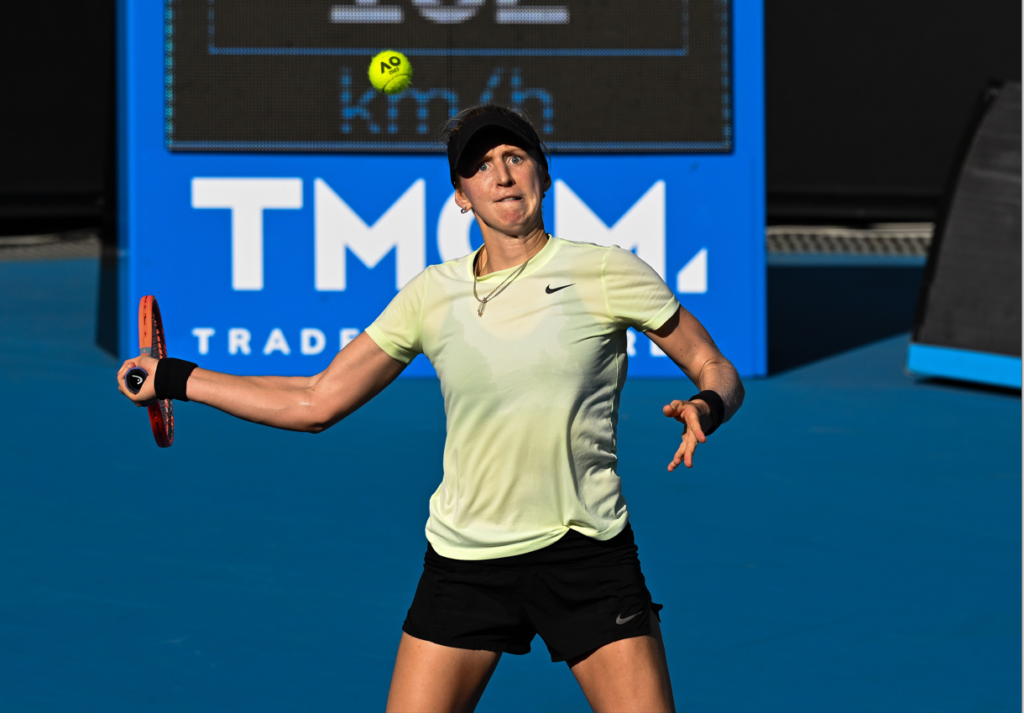
The win guarantees Sebov a first-round loser’s cheque of $106,250 AUS ($73,250 USD). Asked about the significance for her, she said, “I was trying not to think about that. I didn’t think about it. The financial thing is a lot of money for me – at ITFs you really don’t make much and you spend a lot more money than you do at tournaments like this.
“But it’s not really about the money for me – it’s about the game. I don’t really care where I’m playing…the lowest level tournament or the highest level I’m always going to do my best and enjoy myself out there no matter how much I get paid or not paid.”
At that time, Sebov didn’t know who she would be drawn to play in next week’s first round – with the possibilities ranging across a spectrum from two qualifiers, who will play against each other, to someone facing the No. 4 seed Caroline Garcia. Sebov didn’t get any gifts and will indeed go against the 28-year-old Frenchwoman, winner of the WTA Championships last November.
Somewhat ironically, the winner of that match will face either another Frenchwoman, No. 34-ranked Alizé Cornet, or another Canadian, No. 39 Leylah Annie Fernandez. They meet in the first round.
DRAWING CONCLUSIONS
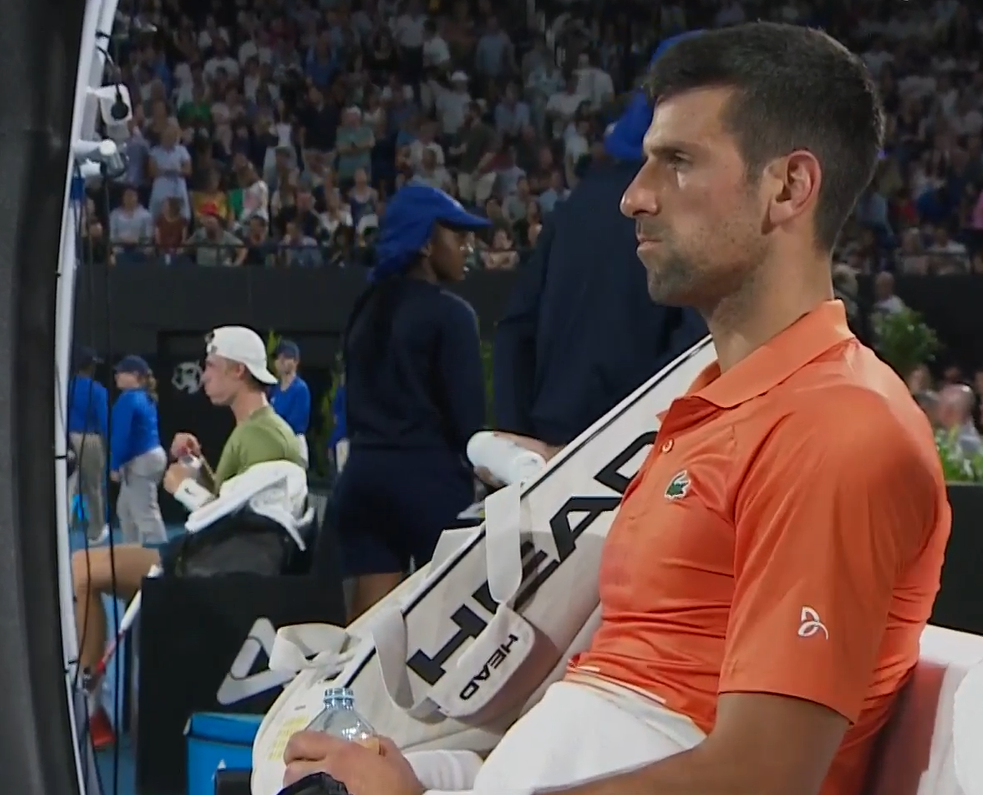
Someone once said that the most important luck in tennis is the luck of the draw.
That will likely ring true to some Canadian players after Thursday afternoon’s 2023 Australian Open draw ceremony in the main media interview room at Melbourne Park.
From the Canadian viewpoint, the most difficult match-up to decipher is No. 6-seeded Félix Auger-Aliassime facing his compatriot Vasek Pospisil, currently ranked No. 94. On paper Auger-Aliassime has to be the favourite, having reached the Aussie Open quarter-finals a year ago before holding a match point and losing to eventual finalist Daniil Medvedev in five sets.
Pospisil hasn’t won a match at Melbourne Park since 2015. Good friends, Auger-Aliassime leads their head-to-head 3-1 but the 32-year-old Pospisil won their last encounter during the 2020 pandemic year in Vienna, 7-5, 7-5.
They are in top-seed Rafael Nadal’s half of the draw, with the winner playing No. 139-ranked Stan Wawrinka or No. 54 Alex Molcan in round two. The long-range potential for the biggest popcorn match-up is against No. 3 seed Stefanos Tsitsipas in the quarter-finals.
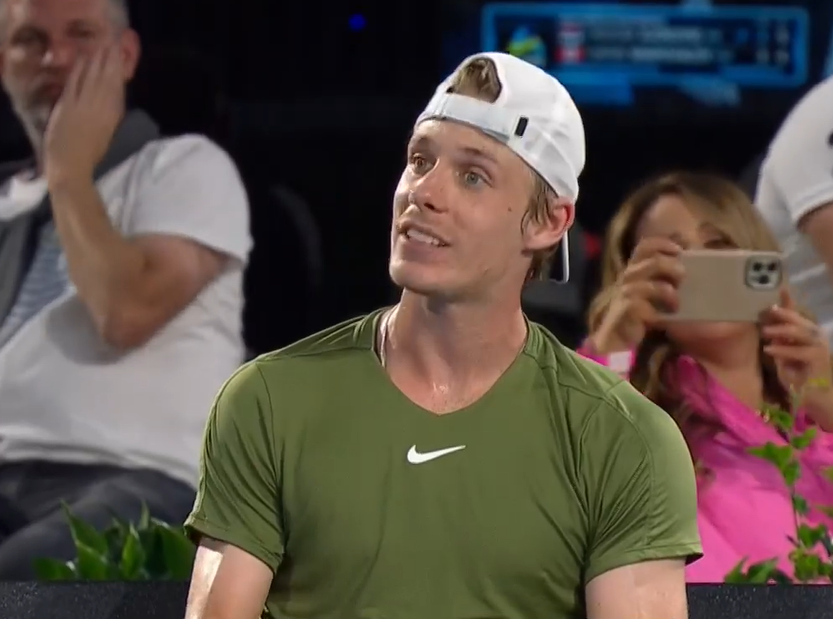
Also in Nadal’s half is No. 20 seed Denis Shapovalov who starts out against No. 81-ranked Serbian veteran Dusan Lajovic, 32. Shapovalov won their only previous meeting – 6-1, 6-3 on clay in Madrid in 2021. Playing in his sixth Aussie Open (9-5 including losing to eventual champion Nadal in the 2022 quarter-finals in five sets), the 23-year old Shapovalov could face a possible third-round confrontation against tenth-seeded Hubert Hurkacz.
Overall the men’s draw is not loaded with standout early-round match-ups with No. 13 seed Matteo Berrettini versus Andy Murray possibly being one, but likely mostly because of the 35-year-old Brit’s marquee appeal. The main headline coming out of the men’s draw is that No. 1 seeded Nadal and No. 4 Novak Djokovic (with 11 Australian Open titles between them) are on opposite sides of the draw.
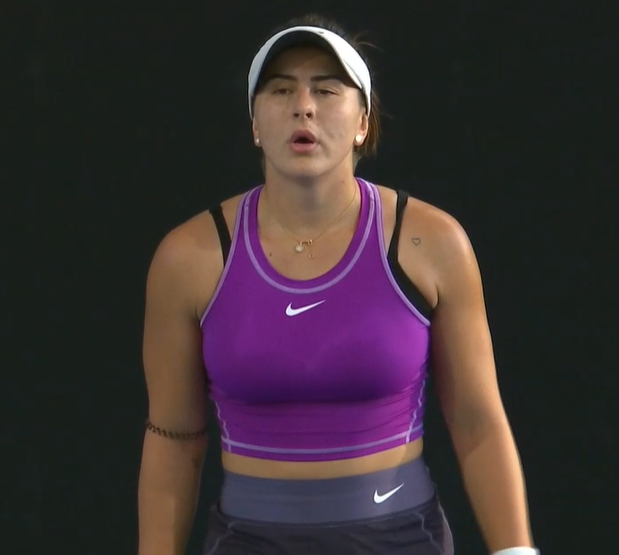
If Canadian men Auger-Aliassime and Shapovalov could have done a lot worse in their draws, at least on paper Canada’s two top women, Leylah Annie Fernandez and Bianca Andreescu, have not been nearly as fortunate.
Fernandez, who was out of form and lost in the opening round a year ago to little-known Aussie Maddison Inglis, will start out against feisty Frenchwoman Alizé Cornet – head-to-head 1-0 Fernandez, 6-2, 6-3 at Indian Wells in 2021. She could then play a second Frenchwoman in a row, fourth seed Caroline Garcia.
It will take some top-flight tennis from the get-go by Fernandez to get her teeth into the tournament. Likewise for No. 42-ranked Bianca Andreescu as she starts out against the rock-solid if not sensational Marie Bouzkova, the world No. 26. Andreescu leads their head-to-head 2-1 but the 24-year-old Czech won their most recent encounter – 6-7(9), 6-2, 7-5 at the Melbourne 250 event in that Aussie pandemic 2021 summer.
In round two Andreescu would play the winner of two qualifiers and then possibly have a third-rounder against top-seed Iga Swiatek, who has to deal with concussive-hitting Julie Niemeier of Germany in her opening match.
Rebecca Marino, who’s playing in her sixth (2-5) Aussie Open dating back to 2011, has drawn No. 95 Zhu Lin for her opener and could play No. 32 seed Jil Teichmann of Switzerland or No. 96 Harriet Dart of Great Britain in round two.
The most fascinating first-round match-up in the women’s draw features a pairing of the only two previous winners in this year’s field – 2012-13 champion Victoria Azarenka against 2020 winner Sofia Kenin.
Further down the track in the third round, there could be blockbuster intranational American and Czech clashes – No. 3 seed Jessica Pegula against No. 28 Amanda Anisimova and No. 15 Petra Kvitova versus No. 20 Barbora Krejcikova.
